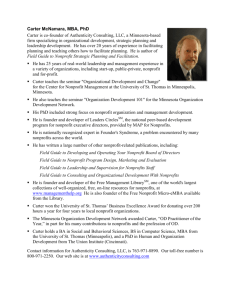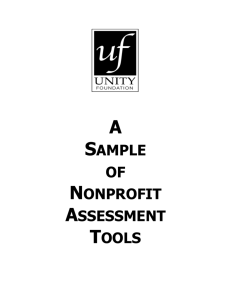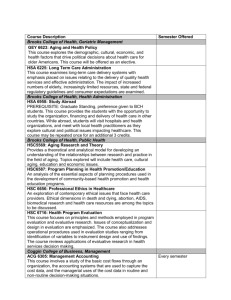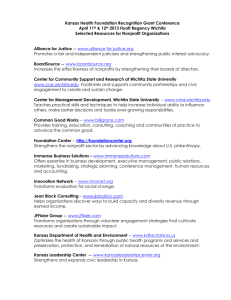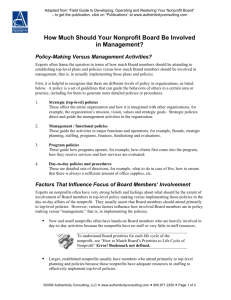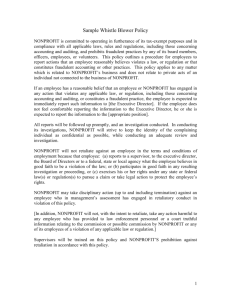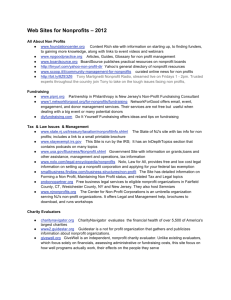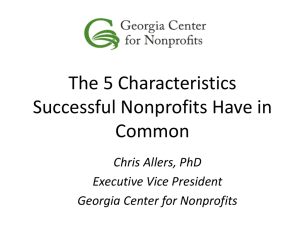The crisis in nonprofit leadership
advertisement
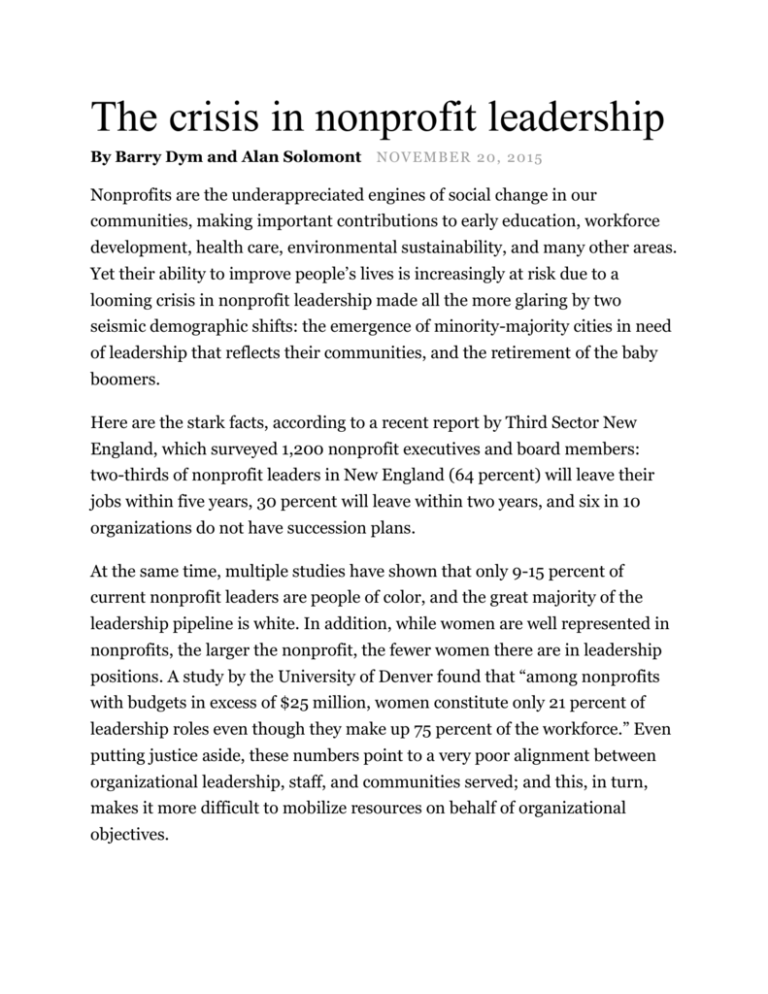
The crisis in nonprofit leadership By Barry Dym and Alan Solomont N OV E M B E R 2 0 , 2 0 15 Nonprofits are the underappreciated engines of social change in our communities, making important contributions to early education, workforce development, health care, environmental sustainability, and many other areas. Yet their ability to improve people’s lives is increasingly at risk due to a looming crisis in nonprofit leadership made all the more glaring by two seismic demographic shifts: the emergence of minority-majority cities in need of leadership that reflects their communities, and the retirement of the baby boomers. Here are the stark facts, according to a recent report by Third Sector New England, which surveyed 1,200 nonprofit executives and board members: two-thirds of nonprofit leaders in New England (64 percent) will leave their jobs within five years, 30 percent will leave within two years, and six in 10 organizations do not have succession plans. At the same time, multiple studies have shown that only 9-15 percent of current nonprofit leaders are people of color, and the great majority of the leadership pipeline is white. In addition, while women are well represented in nonprofits, the larger the nonprofit, the fewer women there are in leadership positions. A study by the University of Denver found that “among nonprofits with budgets in excess of $25 million, women constitute only 21 percent of leadership roles even though they make up 75 percent of the workforce.” Even putting justice aside, these numbers point to a very poor alignment between organizational leadership, staff, and communities served; and this, in turn, makes it more difficult to mobilize resources on behalf of organizational objectives. The majority of boards of directors are unprepared to guide the vast number of leadership transitions that have already begun. And neither philanthropy nor government has stepped to the plate to address the crisis by supporting more training. For example, only 1 percent of foundation grant revenue is dedicated to management and leadership training. Even less government spending is devoted to developing nonprofit leadership, despite the fact that state governments outsource a large percentage of their social service work to these organizations. What’s behind this failure of response? Often, it’s the label that management and leadership positions carry: overhead. Philanthropists want their contributions to fund direct-service programs, forgetting that programs don’t run by themselves. There also tends to be an assumption that nonprofit leaders will simply “bubble up” from experience. But experience alone is often not enough. This expectation that leaders will “make themselves known” can create huge gaps in leadership skills and can stress organizations with already limited resources. By contrast, in the private sector, corporations often see leadership training as vital to their success and, according to Rusty Stahl of the Talent Philanthropy Project, spend more than six times per person what nonprofits spend in this area. Like all crises, this one also presents a potent opportunity: to usher in new generations of more diverse, more collaborative, and better prepared leadership. It can be done, and without breaking the bank. For example, the Institute for Nonprofit Management and Leadership, in affiliation with Tufts University’s Tisch College of Citizenship and Public Service, provides yearlong programs for nonprofit executives to help build a pipeline for middle managers and young leaders who have demonstrated great leadership potential. The INML has produced 600 graduates — each of whom received a scholarship offsetting more than half of tuition — from 360 nonprofits during its initial eight years. Forty-three percent of the students are people of color. Operating in three cities — Boston, Lowell, and, soon, Providence — the INML’s total budget is about $1 million. This small expense — representing less than one executive salary in many private corporations — delivers a big impact. The number of leaders trained can be readily doubled or tripled, while keeping expenses low. Other high-performing programs can be expanded as well. To do so, we will need individuals, foundations, and government to step up and support these efforts. Let’s improve nonprofit leadership development by investing in individuals who are prepared to lead organizations that make a difference in our families, in our communities, and in our world. Barry Dym is founder and CEO of the Institute for Nonprofit Management and Leadership, affiliated with the Jonathan M. Tisch College of Citizenship and Public Service at Tufts University. Alan D. Solomont is dean of the Jonathan M. Tisch College of Citizenship and Public Service at Tufts.




